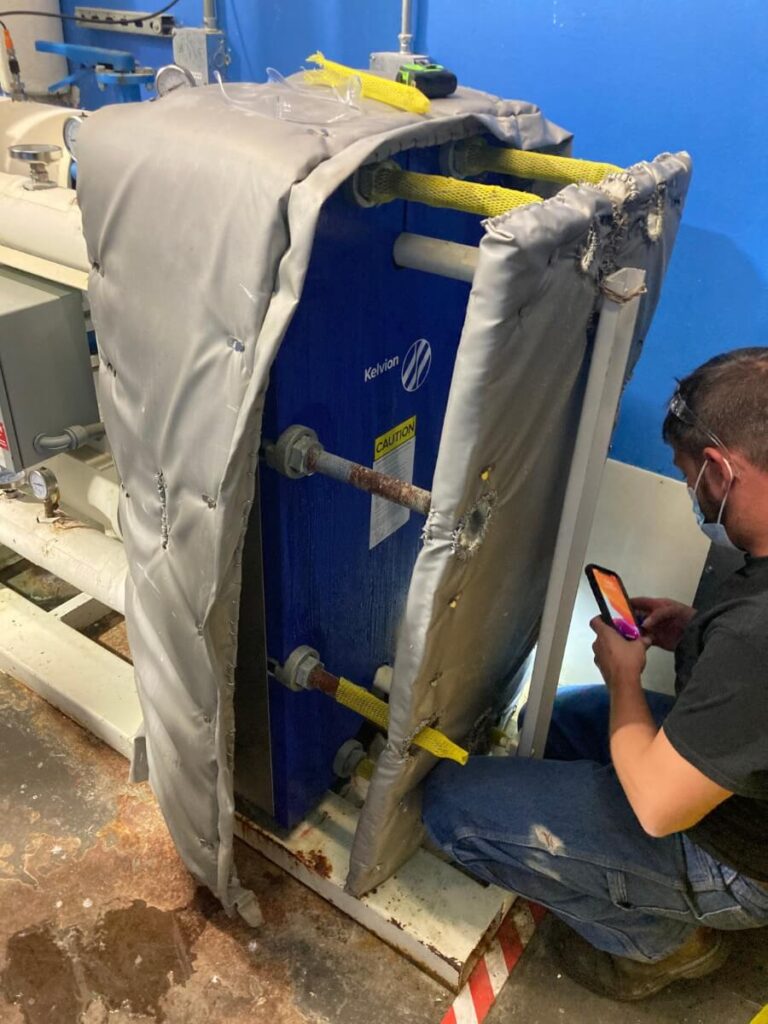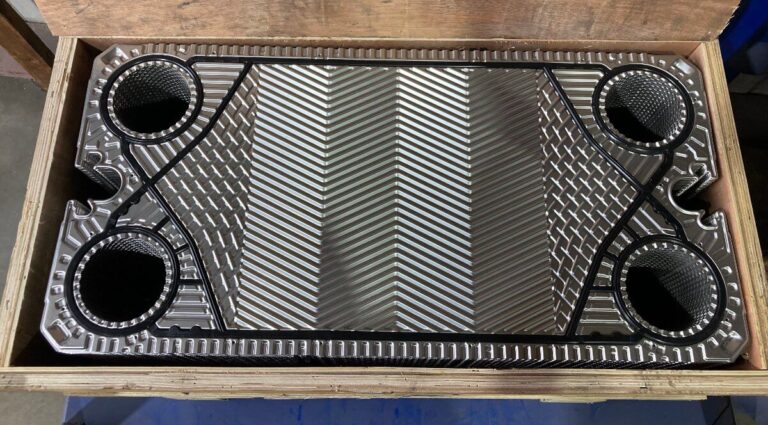Industrial Radiator offers comprehensive testing, cleaning and repair services for industrial plate heat exchangers (PHE). This is a type of heat exchanger prized for its efficiency. Compared to some other types of heat exchanger, a PHE can reduce fluid temperatures quickly because of the large surface area of its plates. The importance of those metal plates to PHE efficiency means they must be properly serviced to ensure smooth operation. Let’s take a closer look at how a PHE works and what you should do to maintain it.
What is a plate heat exchanger?
In simplest terms, a heat exchanger is a piece of equipment that transfers heat from one fluid or medium to another. There are many different heat exchanger designs, but plate heat exchangers are unique in that they use a series of metal plates to achieve temperature change. Exposing a fluid to multiple plates means more surface area and therefore a faster heat transfer.
The construction of a PHE typically includes internal plates, a fixed frame plate, loose pressure plate, gaskets and other components. Internal plates are usually corrugated and are sandwiched between the external plates, held in place by support bars. The gasket arrangement of a PHE helps channel fluids through the system. It is designed to prevent unwanted mixing of the fluid being cooled with the medium to which heat is transferred. It also creates what’s called a counter-current flow through the heat exchanger, which helps maximize performance.

How to maintain plate heat exchangers
While all parts of a PHE are important to maintain, it’s the internal plates that usually need the most attention. Plates must be regularly removed from the frame and cleaned to ensure efficient heat transfer. We use a non-abrasive cleaning process to restore dirty plates and remove harmful buildup or water deposits. To make the cleaning process go faster, tanks are fully charged and heated.
After they are cleaned, PHE plates go through a dye penetrant process that tests for any leaks. By coating a plate in special dye, we can identify any cracks or pinholes that may allow fluids to seep out and potentially contaminate the system. If found, these leaks are repaired and any affected parts are replaced.

Gaskets are also important to carefully inspect and clean on a regular basis. Adhesive or other residue can sometimes affect the function of a gasket and must be cleaned off. Gaskets may also require realignment or replacement to maintain correct fluid channeling and keep the heat exchanger working efficiently. After cleaning and repair are complete, there is a stage of re-gasketing which demands careful attention to detail and the use of the right adhesive for each piece of equipment.
The last stage of PHE service is to reassemble the exchanger and perform final quality control checks. It is important to note that plate heat exchangers are specialty equipment and they require expert technicians to properly service, transport and install. If you have a PHE, you’ll save yourself time and money by partnering with a specialized PHE service provider. Contact us to get more information about heat exchanger service and to develop the best plan for cleaning or repairing your cooling system.
